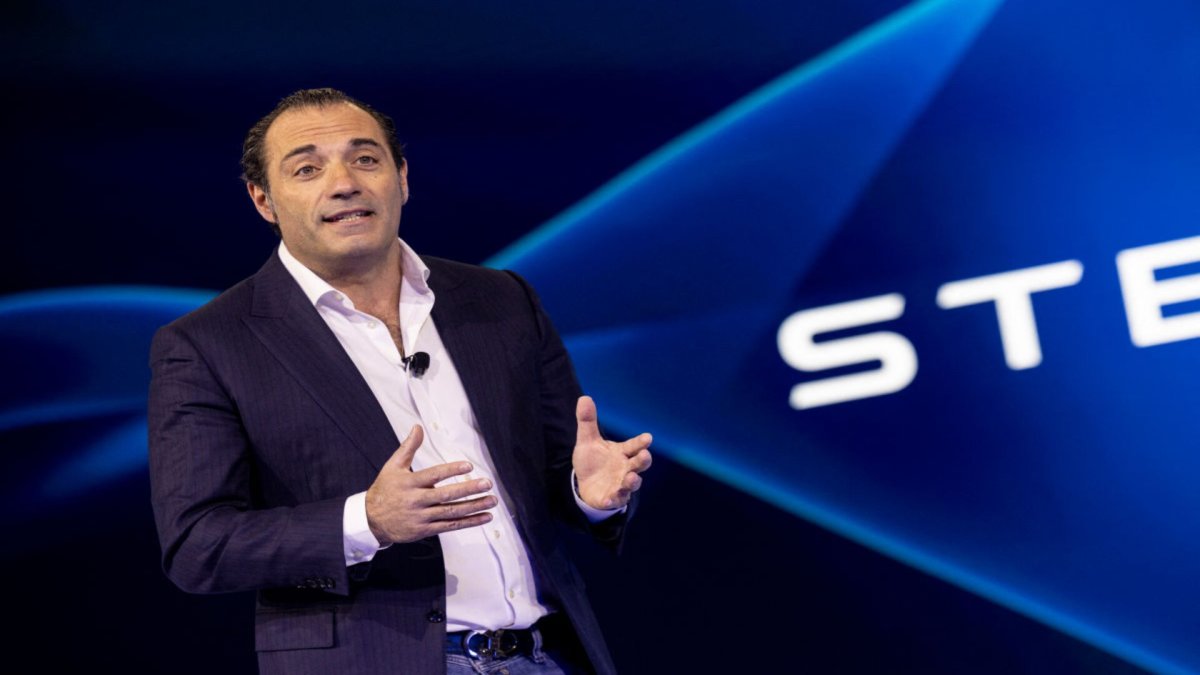Stellantis is in a state of transition.
The parent company of Jeep, Dodge, and Chrysler has had a
rough go since Fiat Chrysler merged with French automaker
Peugeot in 2021.
Former CEO Carlos Tavares left the company in late 2024, and new CEO Antonio Filosa started his tenure on Monday, June 23.
Related: Classic Jeep, Dodge, Chrysler fans just got the best news from Stellantis
Filosa is in the midst of trying to turn around a car company that shipped
7% fewer vehicles this year than it did in the first half of 2024. But
somehow, that decline was better than the 14% decline it reported in the
second half of 2024, when Tavares stepped down in October.
Added to that is the company’s tariff burden.
Stellantis expects tariff expenses for the full year to be at the high end of
its previous estimate of between 1 billion and 1.5 billion euros ($1.15
billion to $1.73 billion).
These struggles might help explain why the company is reportedly
giving up on developing a game-changing technology, despite its
competitors continuing to pour money into that very same tech.

Image source: Laurent/AFP via Getty Images
Stellantis abandons ADAS program due to costs
Stellantis is going to shelve plans to develop the advanced driver-assistance system that is part of its AutoDrive program due to the high
costs of developing the tech, Reuters reported, citing three sources
familiar with the matter.
This is a sharp departure from what the company indicated earlier this
year, when it said a program that would allow users to take their
hands off the wheel and off the road under certain conditions would be
ready for deployment soon.
Stellantis still says the program is ready to be launched, but it won’t be
doing so.
Related: Jeep, Dodge parent has no solution for this emerging problem
“What was unveiled in February 2025 was L3 technology, for which
there is currently limited market demand, so this has not been launched but the technology is available and ready to be deployed,” a Stellantis spokesperson said.
However, Reuters sources say the program is no longer being
developed and is not expected to be deployed. Stellantis did not specify how much money it has spent on a program it won’t launch.
But the
company did share that it is still committed to AutoDrive.
Stellantis shares were down more than 1% Tuesday on the news.
ADAS systems are the future, but developing them is expensive
Advanced driving tech is the brass ring that car companies worldwide
are trying to grab.
Everyone from Mercedes-Benz to BYD to Tesla is working on
autonomous driving, to varying levels of success.
Stellantis rival General Motors has also announced plans to “realign its
autonomous driving strategy,” but GM is focusing its efforts more on
ADAS and less on building its own robotaxi.
GM has reportedly spent more than $10 billion developing its Cruise
robotaxi, but the move away from Cruise is also financial. The company
says it will save $1 billion annually by moving away from the venture.
New Stellantis CEO Antonio Filosa has a lot of work to do
Last month, Stellantis shared that Filosa would be moving the
CEO’s office to Detroit, Michigan, while also revealing that it will build a
$388 million “Megahub” in Van Buren Township, just outside Detroit.
Filosa, 51, who has been with the company for 25 years, is stepping in
at a time when tariffs are eating into the company’s bottom line and it is
losing market share in North America, its most important market.
More automotive:
- Tariffs bring Japanese automakers to their breaking point
- Tesla’s latest move could make it tougher to sell more Cybertrucks
- GM’s tech czar has a novel view of what AI can do
“For sure, one important root cause of our market deterioration, both in
North America, especially, but also in Enlarged Europe, is the fact that in
the past, we decided to phase out many important, relevant, and
successful nameplates,” Filosa said.
Earlier this year, Stellantis reported that total first-quarter 2025 U.S. sales decreased 12% year-over-year, despite a 16% increase in Ram brand sales and a 1% increase in Chrysler brand sales.
Jeep brand
sales increased 2%.
Stellantis reported that first-half net revenues fell 13% year over year,
driven once again by declines in North America and Europe.
The company’s net loss was 2.3 billion euros ($2.66 billion) after
reporting a 5.6 billion euro profit a year ago.
Related: US car buyers feel tariff pain as one automaker raises prices
#Stellantis #takes #major #step #critical #tech #race